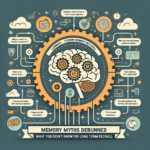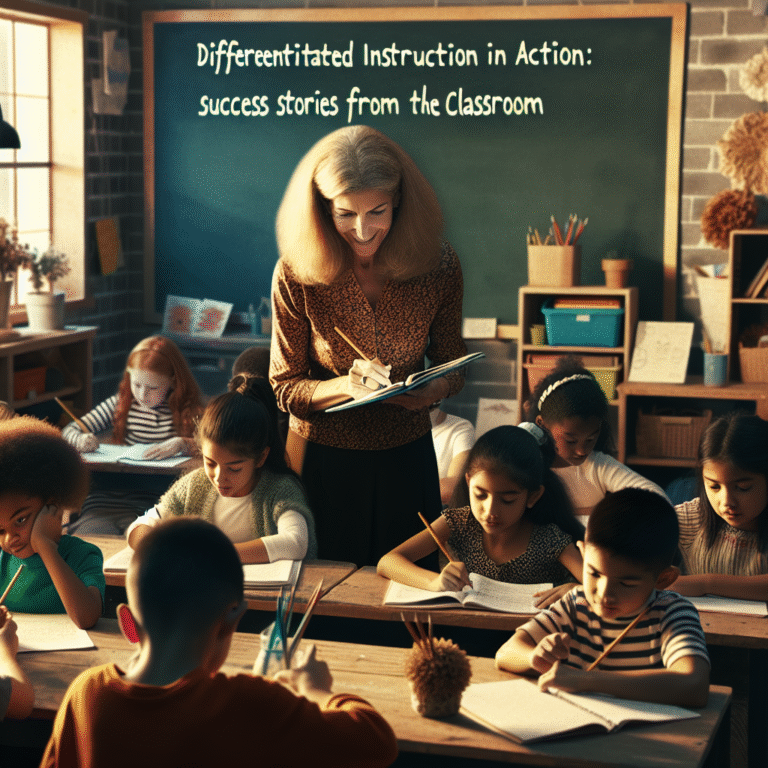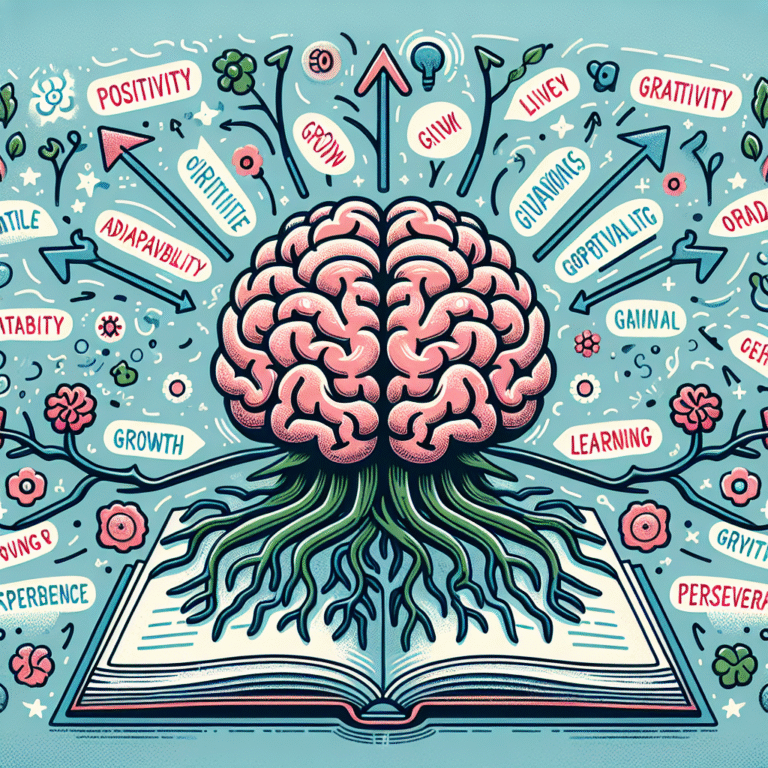
Introduction
Imagine walking into a classroom where every student feels seen, heard, and valued. A classroom where teachers not only share knowledge but also believe in their students’ potential. This is no mere fantasy. Research consistently shows that the impact of teacher expectations on student achievement can be profound, directly influencing academic performance, self-esteem, and long-term success. As educators and parents, understanding this impact is essential for fostering an environment conducive to learning.
In this article, we will explore the multifaceted ways in which teacher expectations shape student achievement, reinforced by compelling case studies and insightful analyses. Join us on this journey as we delve into how positivity, belief, and high standards can create a ripple effect in educational outcomes.
The Role of Teacher Expectations in the Classroom
1. Defining Teacher Expectations
Teacher expectations generally refer to the beliefs that educators hold regarding the capability and performance of their students. These beliefs often influence how teachers interact with students, how they design learning experiences, and the types of feedback they provide. Studies have demonstrated that when teachers hold high expectations, students tend to rise to the occasion, showing improved performance and greater motivation.
2. The Self-Fulfilling Prophecy
At the core of the impact of teacher expectations on student achievement is the concept of the self-fulfilling prophecy. Coined by sociologist Robert K. Merton, this phenomenon occurs when a belief or expectation brings about its own fulfillment. For instance, if a teacher believes a student is capable of excelling, they may offer more encouragement, attention, and resources, thereby enabling that student to excel as anticipated.
Case Study Analysis: The Rosenthal-Jacobson Study
One landmark study illustrating this phenomenon was conducted by researchers Robert Rosenthal and Lenore Jacobson. They informed teachers that certain students were "intellectual bloomers," based on invalid IQ tests. By the end of the school year, those students had significantly improved academically. This study exemplified how positive teacher expectations could transform student performance, demonstrating the impact of teacher expectations on student achievement.
3. The Importance of Growth Mindset
Promoting a growth mindset—believing that abilities can be developed through dedication and hard work—plays a crucial role in enhancing the impact of teacher expectations on student achievement. Teachers who communicate the importance of effort and persistence foster resilience in students. This approach not only encourages higher achievement but also affects students’ beliefs about their own capabilities.
Chart Analysis: Growth Mindset vs. Fixed Mindset
| Aspect | Growth Mindset | Fixed Mindset |
|---|---|---|
| Beliefs about Ability | Abilities can be developed | Abilities are static |
| Response to Failure | Opportunity for learning | Sign of inadequacy |
| Student Motivation | Intrinsic motivation and love for learning | Fear of failure |
The Practical Application of Teacher Expectations
4. Setting High Standards
Teachers play a pivotal role in establishing high academic standards. When expectations are communicated effectively, students step up to meet them. However, it’s essential that these expectations are realistic and achievable.
Case Study Analysis: The High Expectations Project
Schools that adopted the High Expectations Project saw measurable improvements in student performance. Teachers established specific, high standards for all students, facilitated peer mentorship, and provided targeted interventions when necessary. The outcome? Not only did students achieve academically, but they also grew personally and socially.
5. Providing Constructive Feedback
Feedback is one of the most powerful tools an educator has. Providing constructive feedback reinforces high expectations and guides students toward improvement. Rather than focusing solely on grades, feedback should emphasize growth, effort, and strategies for overcoming challenges.
Example Table: Effective vs. Ineffective Feedback
| Effective Feedback | Ineffective Feedback |
|---|---|
| "You worked really hard on this project. Consider expanding your arguments." | "This isn’t good enough." |
| "Your math skills have improved since last month! Keep practicing those problems." | "You always struggle with math." |
Emotional and Social Aspects
6. Building Strong Relationships
The relationship between a teacher and a student profoundly affects academic success. When teachers show that they care, students are more likely to strive to meet their expectations. Building trust and rapport should be a priority in the classroom.
Case Study Analysis: The Importance of Trust
At a school in Baltimore, teachers focused on building relationships through consistent communication and support. The results were staggering with significant increases in both academic performance and student motivation. This emphasizes the impact of teacher expectations on student achievement not only academically but also socially.
7. Fostering a Positive Classroom Environment
A positive classroom environment encourages risk-taking, creativity, and inquiry. When students feel safe and supported, they are more inclined to challenge themselves and meet high expectations.
Cultural Considerations
8. Understanding Diverse Backgrounds
Teachers must consider cultural backgrounds in their expectations. Different cultures may have varying beliefs about education and achievement. Sensitivity and adaptability are key to ensuring that all students feel included and valued in the expectations set before them.
Case Study Analysis: Cultural Awareness Training
A school district in California implemented cultural awareness training for teachers. By understanding the unique backgrounds of their students, teachers adjusted their expectations to be more inclusive, resulting in improved engagement and academic performance, reflecting the impact of teacher expectations on student achievement in a diverse setting.
Technology and Teacher Expectations
9. Utilizing Technology for Enhanced Engagement
With the rise of technology in education, teachers can leverage digital tools to cater to various learning styles and set expectations that resonate with students. Interactive platforms and gamified learning experiences create excitement and motivate students to meet higher standards.
Chart Analysis: Technology Use in Education
| Technology Use | Student Engagement Level |
|---|---|
| Gamified learning experiences | 80% reported heightened interest |
| Interactive digital simulations | 75% indicated improved comprehension |
Conclusion
By now, you should have a clearer understanding of the impact of teacher expectations on student achievement and its dynamic components. From the self-fulfilling prophecy to the importance of fostering a positive environment, the role of teacher expectations is both powerful and transformative.
Teachers have the unique ability to shape futures by believing in their students. The journey toward academic success begins with high expectations, trust, and strong relationships within the classroom. Educators have the opportunity to inspire greatness, and with that, they can redefine possibilities for their students.
FAQs
1. How do teacher expectations affect students emotionally?
Teacher expectations can significantly impact students’ self-esteem and confidence. When students feel supported and believed in, they are more likely to engage positively with learning.
2. Can low expectations have a lasting effect on students?
Absolutely. Low expectations can lead to a cycle of underachievement that can affect students throughout their academic careers and beyond.
3. How can teachers raise their expectations without discouraging students?
Teachers should ensure that expectations are communicated as goals to be achieved rather than unattainable standards. Offering support, feedback, and encouragement helps maintain motivation.
4. Is there a significant difference in achievement based on the level of teacher expectations?
Yes, numerous studies indicate that students fare better academically when teachers maintain high expectations compared to cases where expectations are low.
5. Can parents influence teacher expectations?
Parents can advocate for their children by sharing their aspirations and expectations. Open communication between parents and teachers can strengthen the belief in a child’s potential.
In conclusion, the narrative regarding the impact of teacher expectations on student achievement is one that demands attention. Through high expectations, supportive environments, and strong relationships, educators can unlock the doors to success for all students. Together, let’s promote a culture of belief and excellence, helping students achieve their fullest potential.

















